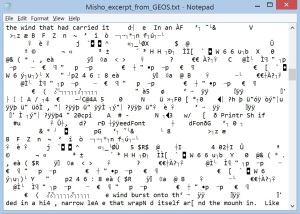Character Concept
The concept of Misho as a character in a picture book was born many years ago–a few decades in fact. It started in a mall when I saw a child being half dragged behind a preoccupied–and maybe just a little bit scary–parent. You know the gait: arm looking like it’s pulling out of socket, little legs pumping to keep up with an adult stride. Her eyes were so empty that it wrenched my heart. I wondered what happened to this child’s dreams to be so bereft of joy.
Much later, I came upon the image of a tree. It was set apart from the others and had been struck by lightning. A shock went through me when the synapses in my brain superimposed that tree on the memory of the forlorn child. Could that child ever stand straight and tall? Or would she be forever withered inside, cringing against the onslaught of an unfair world? At that moment, Misho was conceived.
During the gestation of Misho, a slow anger grew in me–anger at all unattainable expectations of happiness that dangled in front of our group psyche, like the proverbial carrot before the donkey. Tantalizing. Mesmerizing. Always out of reach.
So much of what I’d learned to hope for as a child was about having a dream, setting a goal, striving to reach a kind of ideal. Stories in cartoons, movies, novels, and picture books were about special individuals winning the pennant, making first place, being top of the class–about being the hero against all odds. But what about everyone else? What happens when you can’t beat the odds? That was the story of Misho’s adventure.
From Concept to Picture Book–Almost!
Misho’s adventure unveiled itself as a combination of mental images, emotions, and words. As the story took on a life of its own, my anger transformed into excitement. Misho was so many children I’d seen. She was me.
I took the manuscript to a talented artist and dear friend, hoping to turn my it into the picture book in my head. To my shock and dismay, she recoiled at the concept; the theme was too personal. This wasn’t the reaction I was hoping for! But I knew I’d struck a chord that would resonate with parents. Misho’s story needed to be told. But would others identify with Misho in a more positive way?
Unfortunately, Life intervened. Misho was packed away. It was not until 2013 that Misho reminded me she’d been abandoned.
Out of the Archives
I was working on the screenplay for “White Storm,” a science fiction action movie conceived by the accomplished Hollywood artist, Bruno Werneck. While reviewing one of his concept images for the teaser video, the buried memory of Misho re-emerged. I felt compelled to resurrect the project, but I had no idea how far back I would have to dig.
I found Misho on an old floppy disk in GEOS format.  GEOS was a proprietary format for the Commodore 64. Would Misho survive the outrageous slings and arrows of outdated technology? I ran out to buy a floppy drive and popped in the ancient disk. To my dismay, the text looked like gibberish–garbled code interspersed with broken and repetitious strings of text.
GEOS was a proprietary format for the Commodore 64. Would Misho survive the outrageous slings and arrows of outdated technology? I ran out to buy a floppy drive and popped in the ancient disk. To my dismay, the text looked like gibberish–garbled code interspersed with broken and repetitious strings of text.
I couldn’t find an emulator that work on my system, so I resigned myself to the arduous task of manually separating content from spurious code, line by line. It was like dusting sand from fractured fossils. But Misho deserved the time and patience it took to resurrect her. She deserved the chance to be a real picture book. I am happy to report that “Misho of the Mountain” awoke, vibrant and sweet, ready to face the new world after her long sleep. With love and hard work, she will be in publication Spring of 2015.
Diana Diehl
Latest posts by Diana Diehl (see all)
- Free Family Fun — Adventure at the OCCBF - September 9, 2018
- 6 Things You Can Do To Manage Anxiety - August 27, 2018
- How to save a dog and and avoid frightening surprises - May 23, 2018



That looks like some messy code! How long did it take to extract your story from that chaos?
Messy is right! It took several sessions over a few days. It felt a little like untangling a wad of fine chain necklaces. But the text was in there. The excerpt in the post shows what the worst segments looked like.
How did you find an illustrator when you decided to reactivate your children’s book project?
Teri and I worked on another project–actually an anthology of short stories, poems, and haiku that were written for a contest. The prompt for “The Coffee Shop Chronicles” contest was–you guessed it–coffee. Teri is a talented illustrator with much experience in layout, design, and publishing. I am so happy to be working with her.
Sounds wonderful, beautiful, Diana. I’ll be looking for it.
Evie
Thanks, Evie! I have a wonderful illustrator and layout person I’m working with, and we have high hopes for the success of this project. Thank you for looking at the site. I’m working on networking so we can have sales when we release. Feel free to spread the word to anyone you think might appreciate this.
~ Diana
Hi Evie! Thanks for commenting on my blog post last year. For some reason, your comment got buried. I’ve found it now! I just finished my manuscript for Misho, and it’s in the hands of my illustrator. I am so excited! It’s been a long journey.
Helo – licwn i glywed mwy am drydar mewn 2 iaith a beth yw’r ymarfer gorau. Ar bwynt cyeliytlsdig dwi ishe clywed gan bobl am ddefnyddio Facebook yn dwyieithog – unrhyw sylwadau am y ffordd orau i gymdeithas rhedeg tudalen(nau) ddwyieithog?
Hi Eve,
Mae’n ddrwg gen i , nid wyf yn gwybod Cymraeg . Rhai tudalennau cymdeithasol yn ei wneud cyfieithiadau awtomatig os bydd defnyddwyr glicio ar y ddolen cyfieithu. Roeddwn yn gallu cyfieithu eich neges yn rhannol gan ddefnyddio Google auto- cyfieithu. Pob lwc gyda’ch dudalen dwyieithog !